Fables, folklore, and fairy tales have been used by the earliest humans to make sense of the world, to understand right from wrong, to see good conquer evil, to impart lessons on virtue, or give warnings about the consequences of immorality. The survival of these stories in today’s society through hundreds if not thousands of variations, confirms our longstanding and ongoing search for our own happy ending. Multidisciplinary Toronto artist Barbara Klunder is no exception.
In the intimate upstairs space at the Paul Petro Contemporary Art, Fables and Tattoos showcases Barbara Klunder’s artworks in different mediums exploring these various themes. Though small in their quantity, the work is formidable nonetheless in its messaging. With a background in graphic design and illustration, Klunder effortlessly tells perplexing stories of tragedy, beauty, and resilience.
Installation view of Barbara Klunder, Fables and Tattoos, 2025
First debuted in 2013 at David Kaye Gallery, Toronto, BulletProof Vests is a collection of colourful papercut collages, made using hand-crafted washi paper. Packed with intricate detail and symbolism, Vests reflects on gun culture and violence that, Klunder suggests, affects not just humans, but creatures of all kinds. A plethora of exotic plants and vines weave amid skulls, birds, fish, insects, and other animals in each of the papercut vests. Looking closer, you will see seamlessly embedded within and in between the animals and plants, words of warning and activism. For instance, in Shotguns, the words “laser”, “guns”, “rifles” become part of the leaves of a plant, whereas phrases like “violence is hate”, “an idea can’t be killed” decorate the vest titled Play Music, Not War.
Barbara Klunder, Shotguns from BulletProof Vests, 2013, paper-cut and collage, 29 ½ x 21 ¼ inches
The choice to use paper—a flimsy, fragile material—to create representations of bullet proof vests—stable and tough—harks back to the basic good-versus-evil in fables. Beauty, nature, and our voices can serve as protection in the fight against violence and death. While the pieces are packed with meticulous detail and colour, it never seems convoluted; everything has its place and adds to the composition overall, a testament to Klunder’s eye for design.
Her skill with design and illustration really comes out full force in the other papercut collection of tattoo designs. Inspired by the imagery in Canadian poet Gwendolyn MacEwan’s writings, Klunder created four papercuts of nature scenes, recalling the historical purpose of tattoos as a way to brandish your loyalties to outsiders and enemies. These artworks are symmetrical and balanced, akin to medieval coats of arms, but otherwise, very modern in line and form.
Installation view of Barbara Klunder, Fables and Tattoos, 2025,
Medieval fables and folklore are more specifically referenced in the new collection of small gouache on wood paintings. In the artist’s statement, Klunder mentions Hieronymus Bosch as inspiration. He was a Renaissance painter, also using wood as a canvas, whose works are highly imaginative, complicated, bustling scenes rich in symbolism and allegory. The connection between the art of Bosch and Klunder’s art is quite obvious, though Klunder’s works aren’t just a rehashing of medieval paintings or fables. Instead, she combines different elements from familiar stories into one image, revealing something new about them, and bringing these historical folktales into the 21st century.
In one of the paintings, the figures of Adam and Eve are replaced by the Tortoise and the Hare, a fable about a race between characters of unequal abilities, where trickery instead of perseverance and grit, was used to prevail and gain power over the stronger opponent. Klunder’s interpretation suggests the inequality between Adam and Eve, between man and woman, and the manipulation of Eve to commit the original sin.
Barbara Klunder, Adam & Eve / Tortoise & Hare, 2024, gouache on wood, 12 x 9 inches
In another piece, the Little Mermaid cradles an infant in her arms, while three swords pierce her body. Each pommel on the hilt of swords displays a symbol: there’s Mars symbol of the male gender, a crucifix, and a serpent. The three swords is a reference to the tarot deck in which the Three of Swords represents pain, sorrow, and betrayal. One can discern that this painting is about the hurtful aspects of motherhood that come from the patriarchy and religion, and also how humans hurt the environment and its creatures.
Barbara Klunder, The Little Mermaid / 3 of Swords, 2024, gouache on wood, 10 x 8 inches
In her gouache paintings, instead of an expansive and fantastical backdrop like Bosch, Klunder opts for a more simplistic and dark background, drawing attention to the various characters and symbols. The darkness adds an element of surrealism and a tinge of foreboding.
Installation view of Barbara Klunder, Fables and Tattoos, 2025
You could spend hours scrutinizing each painting or papercut in this exhibition, extrapolating many meanings and contradictions, and still feel like there is something more to find. Klunder doesn’t use art just for personal expression, but to tell stories, and furthermore, to expose the stories we, as a society, tell ourselves.
Rebekah Barona
Images are courtesy of Paul Petro Contemporary Art.
*Exhibition information: Barbara Klunder, Fables and Tattoos, January 17 – February 22, 2025, Paul Petro Contemporary Art, 980 Queen Street W, Toronto. Gallery hours: Wed – Sat, 11 am – 5 pm.


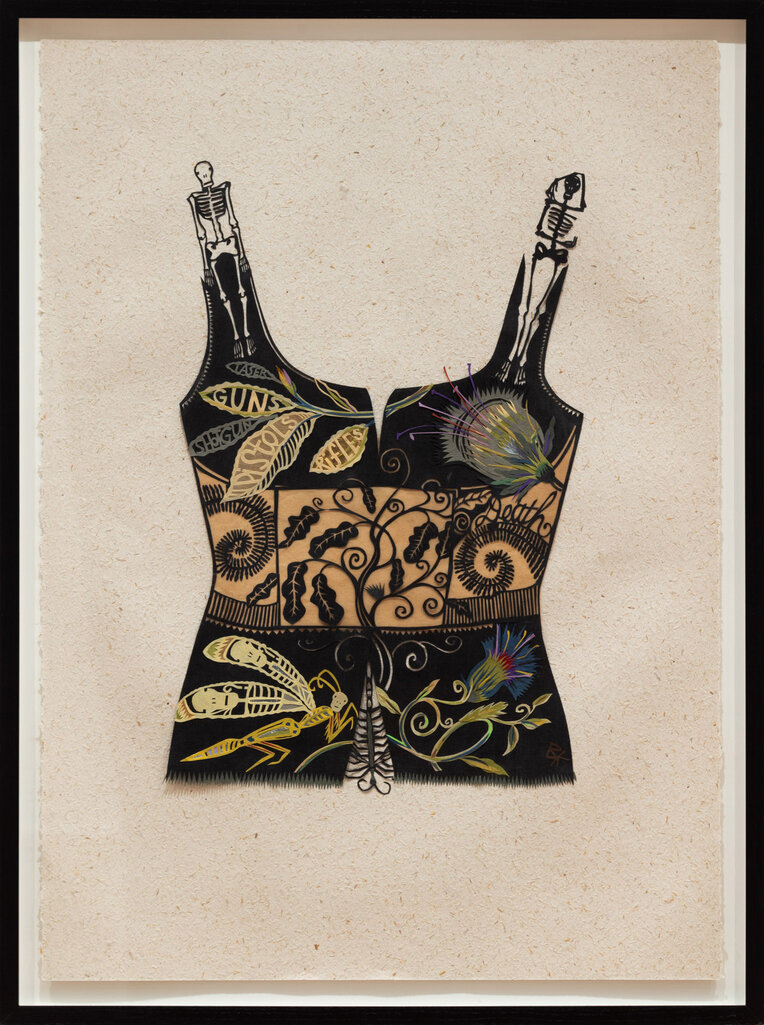
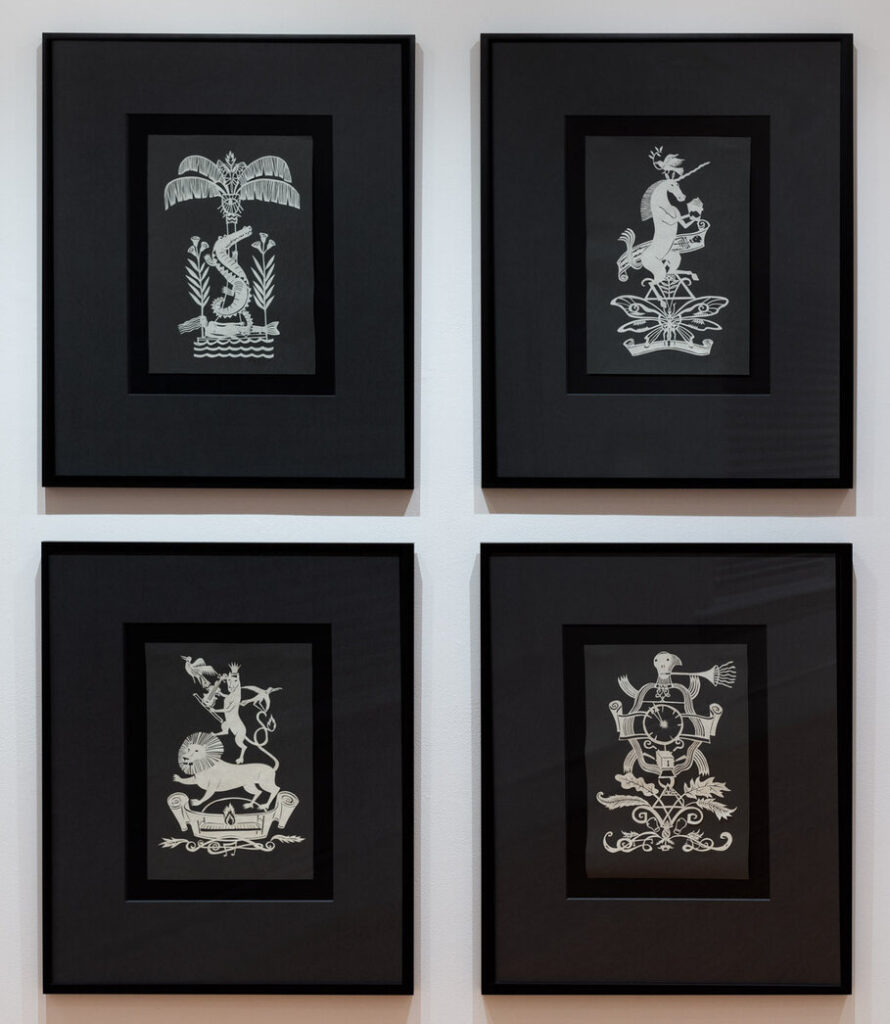
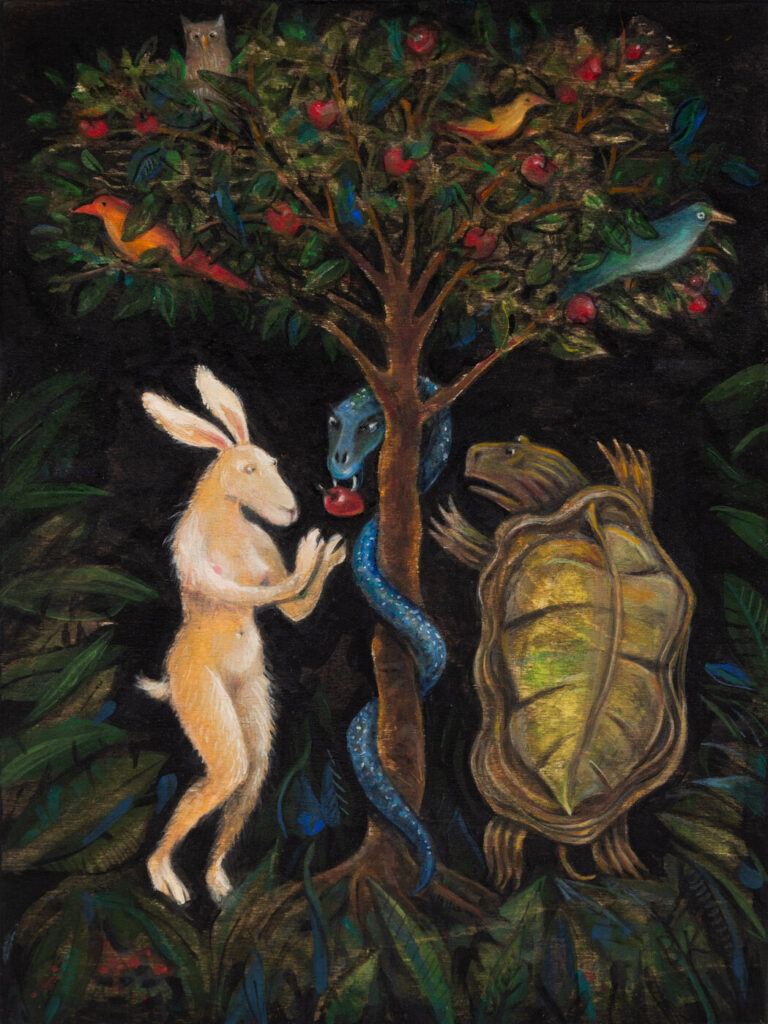
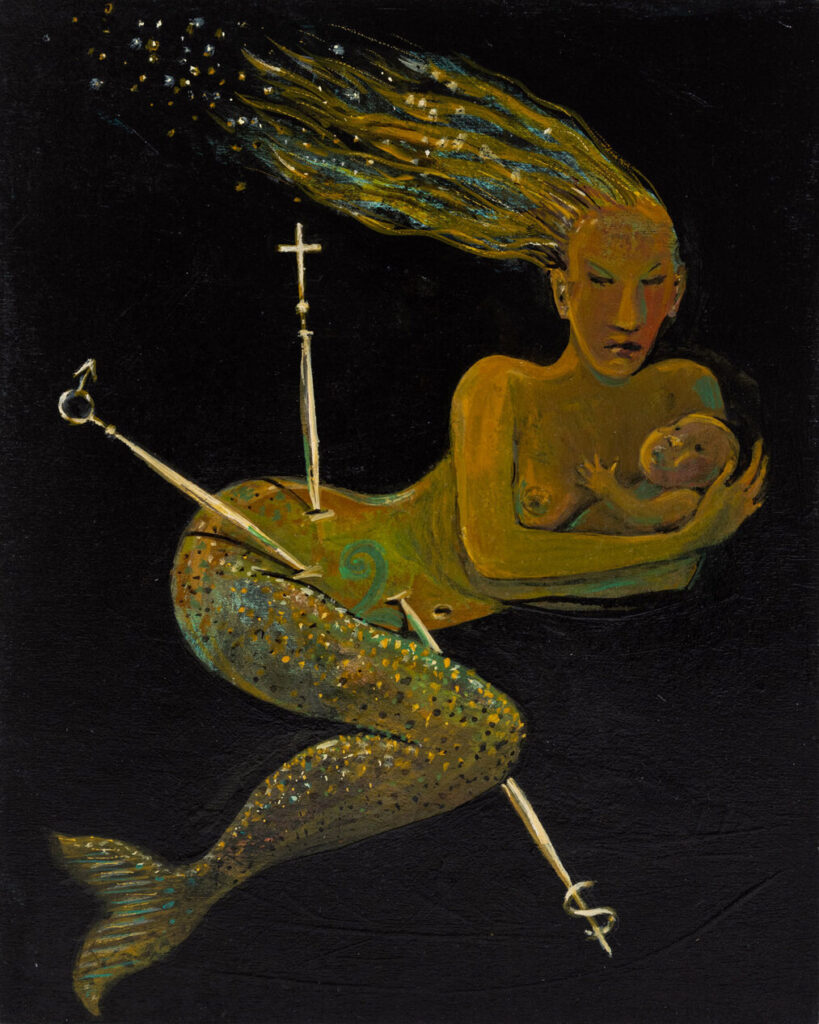
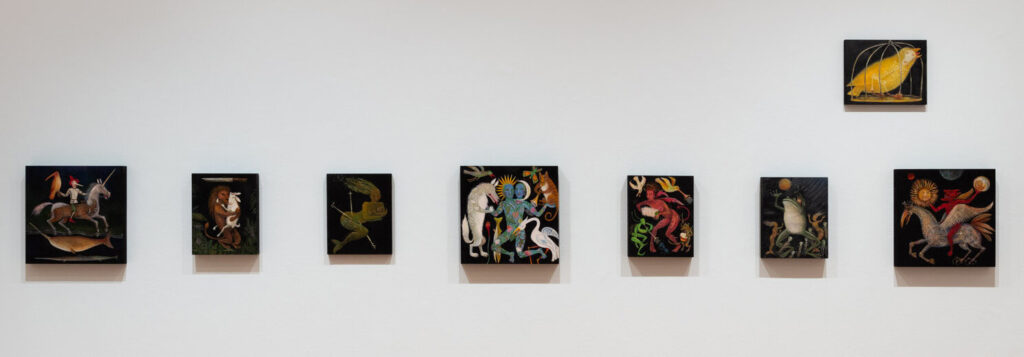
Thank you so very much Rebekah Barona.